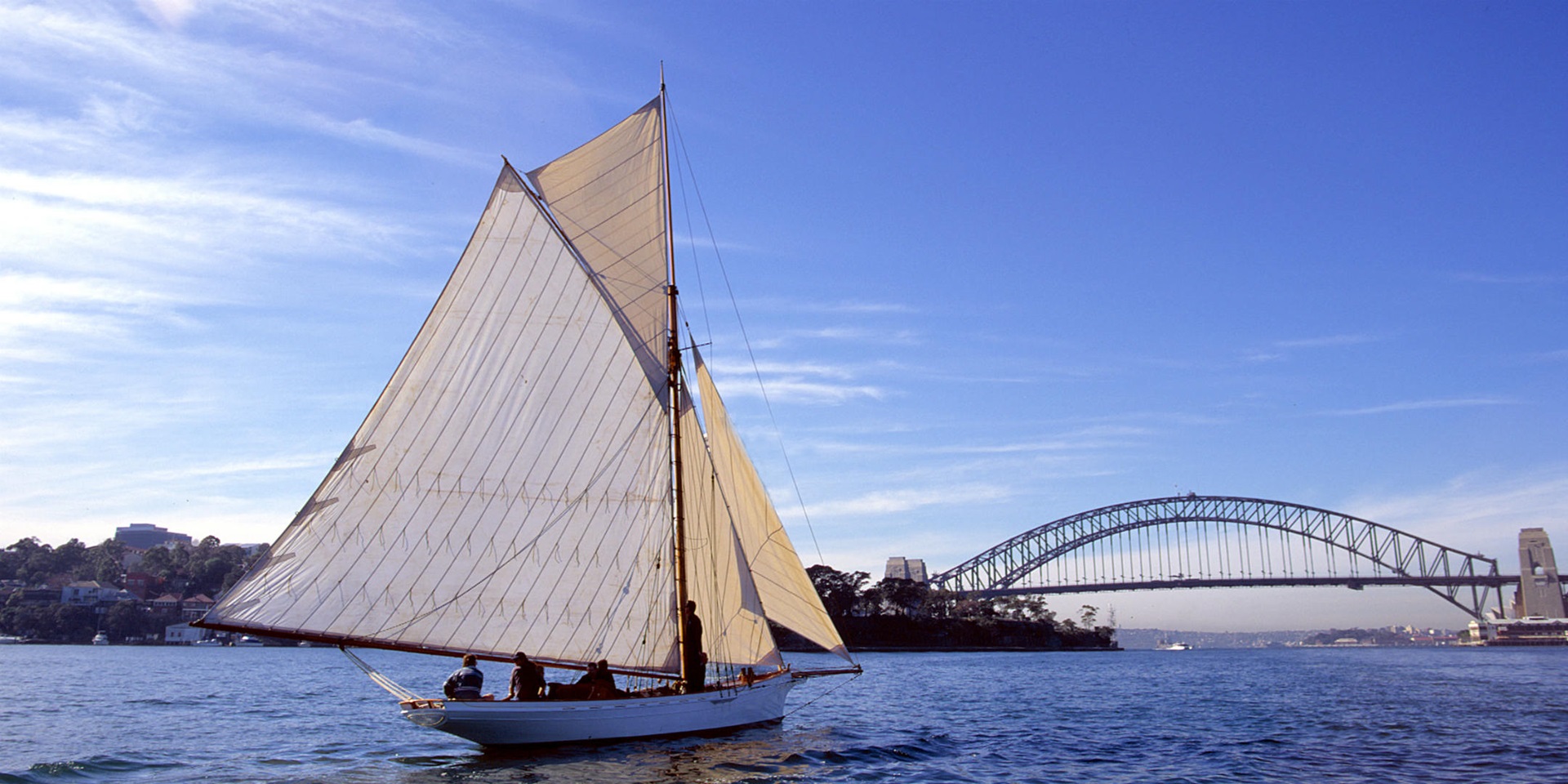

The Ena, a fine example of Edwardian elegance. Image: Andrew Frolows/ANMM.
The Classic and Wooden Boat Festival, April 15 to 17 2016.
The answer to the question ‘what is a classic boat?’ will be on display over the weekend on 15th to 17th April at the Australian National Maritime Museum, where The Classic and Wooden Boat Festival will have over 100 craft that show the diversity that fits this title.
One of the most easily identified classic vessels will be the steam yacht Ena. It features high class Edwardian elegance throughout and the sight of this fine craft steaming along, cutter bow carving through the water, a gently curving sheer, raked lines to the superstructure and a long overhang aft are all hallmarks of what most would consider classic without question.
But what about Lyndenne – a cray fishing vessel from Tasmania? Here we have a nice rounded bow, curved sheer, nicely proportioned wheelhouse and an auxiliary sailing rig. It too has an elegance and style to it that was also functional for its purpose and it is a classic example of a workboat, or to put it another way, a fine example of a classic workboat.

The Thistle is still sailing as an example of the Australian couta boats. Image: ANMM collection.
The couta boats are another classic workboat – they deserve the title as they are a born and bred style of craft dating back to the late 1890s, with a truly Australian heritage in the way the design evolved to suit the rough waters of Bass Strait. Once again, the proportions and style are pleasing to look at and that seems to be a common feature in many craft that have earnt the title “classic”.
There are also several GRP or fibreglass boats coming along, including Whisper (a Contessa), Sylvara (a Clansman) and Saga (a Compass 28). Here we have yachts with nice sheer lines, overhangs and cabin profiles, just like their wooden counterparts they were inspired by, but they took into account the changes in technology and expectations, and gave people a classic style in a modern material for the 1970s and 80s. Australian designers put their hand to these, but we also have an American visitor – the Hinckley Bermuda 40 Indigo – this comes from the prestigious Hinckley yard where they were built for over 32 years – proving that longevity is another mark of the “classic” title.
The many Halvorsen cruisers are another example of longevity – you can’t get a new wooden one and they haven’t been able to for decades, but their style, craftsmanship and instant recognition has made them collector’s items. The Halvorsen club has brought along a range of different Halvos for the weekend.
Racing elegance in yachts will be on show all over the place. Modern yachts have their own minimalist streamlined and aggressive look, in time it will be classic too, but for now we can revisit the past with the beauty of the long and lean International metre class boats such as Gretel II, Defiance, Norske and Sjo Ro, and the ocean racers such as Salacia, Caprice of Huon, Lorita Maria or Fidelis – even the names have a classic ring to them.

The Akarana, a classic wooden yacht. Image: ANMM collection.
And we can go back again to the 1890s with Akarana, Kelpie and Jenny Wren, classic yachts that graced the harbour and were on view when Ena first steamed around on weekends. From our vantage point of a 24/7 lifestyle, those days seem to be a classic time we look back on with envy.
Envy – that will be on everyone’s mind when they come to the festival to see the craft, and perhaps wish they had one too.
